Turnover Checklist Samples
-
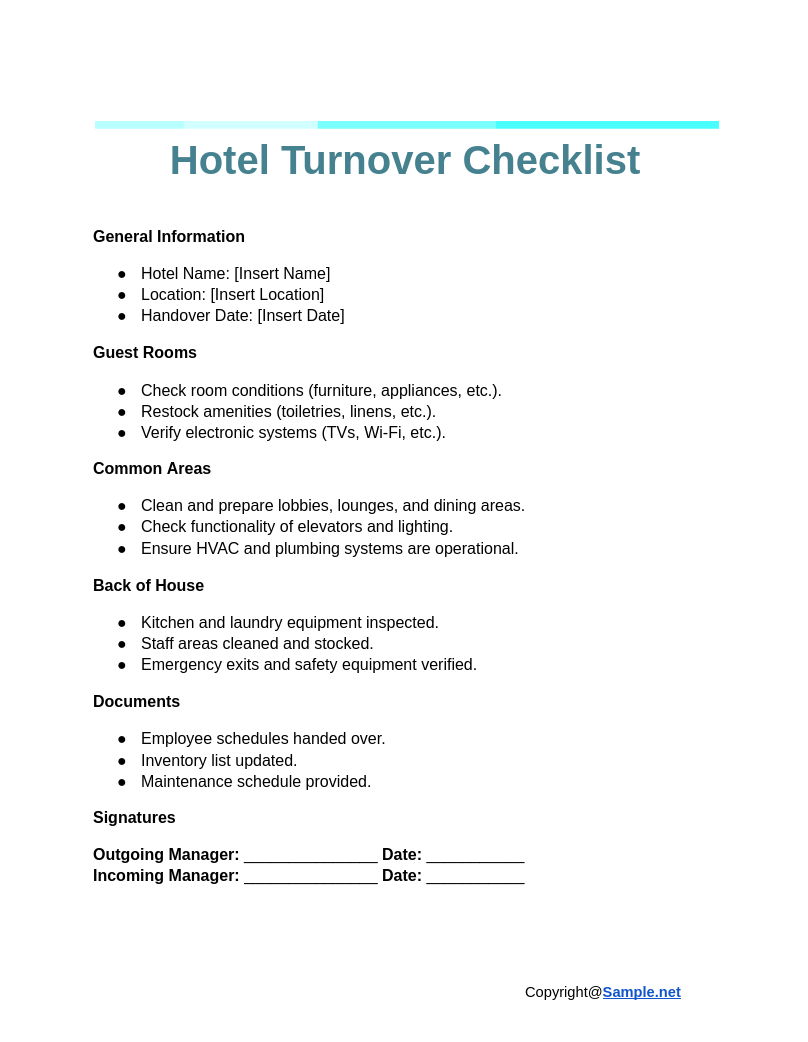
Hotel Turnover Checklist
download now -
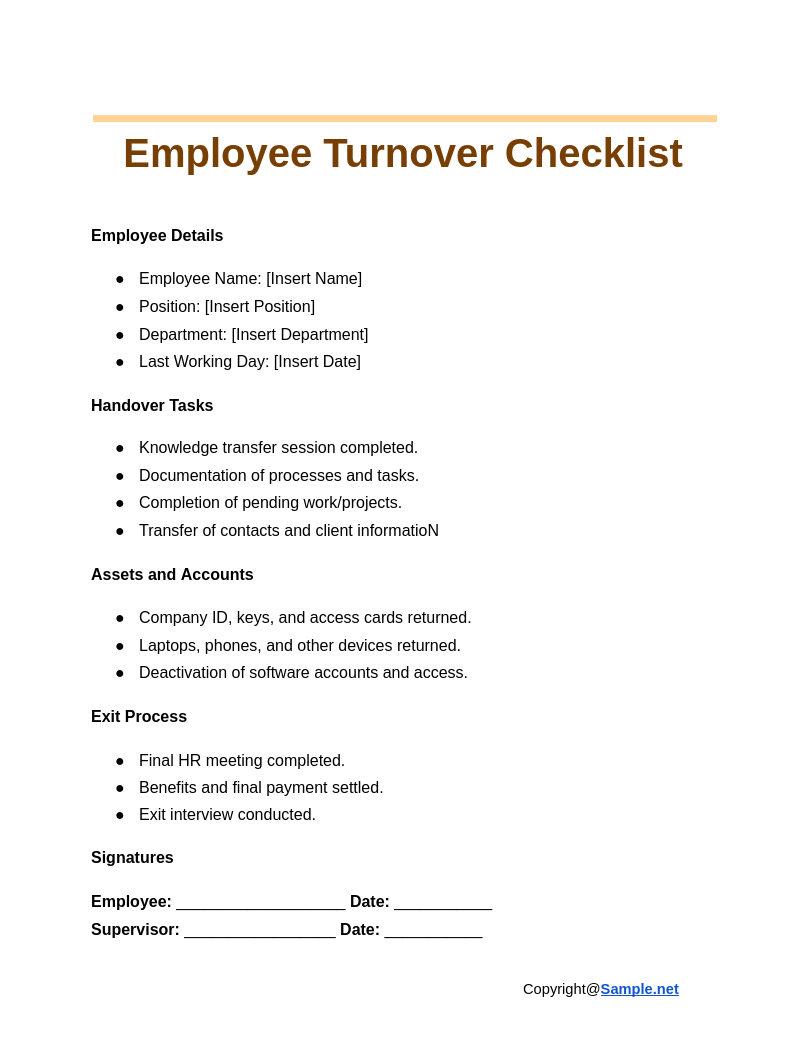
Employee Turnover Checklist
download now -
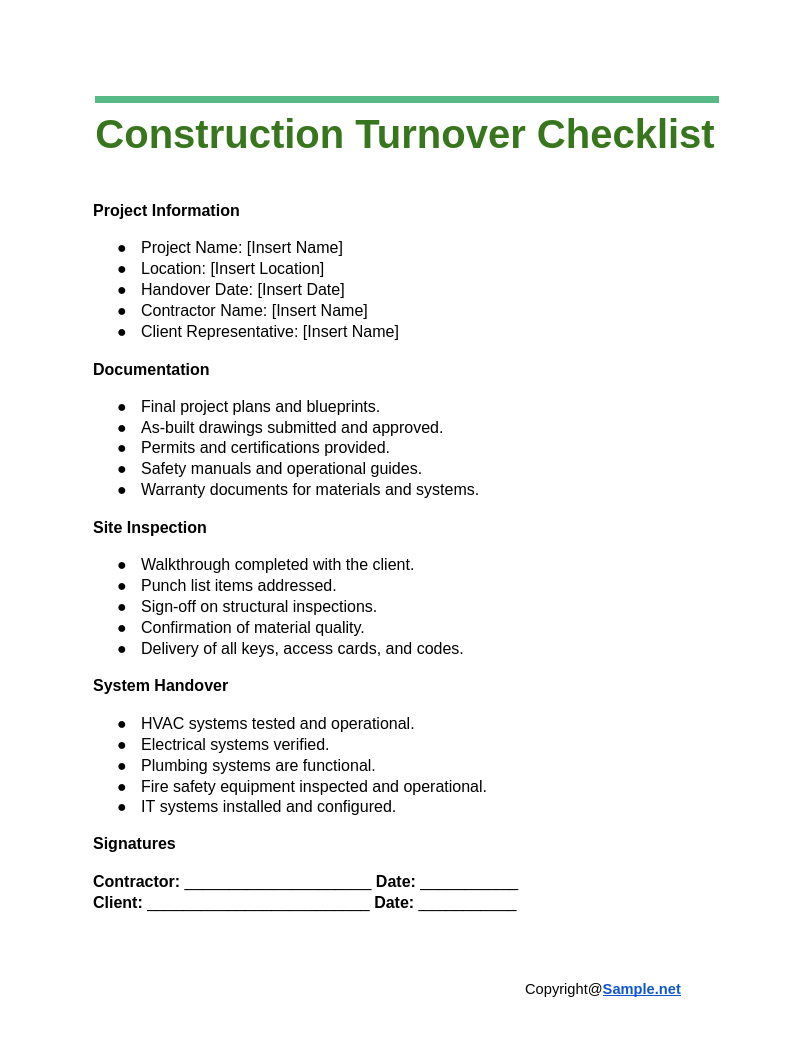
Construction Turnover Checklist
download now -
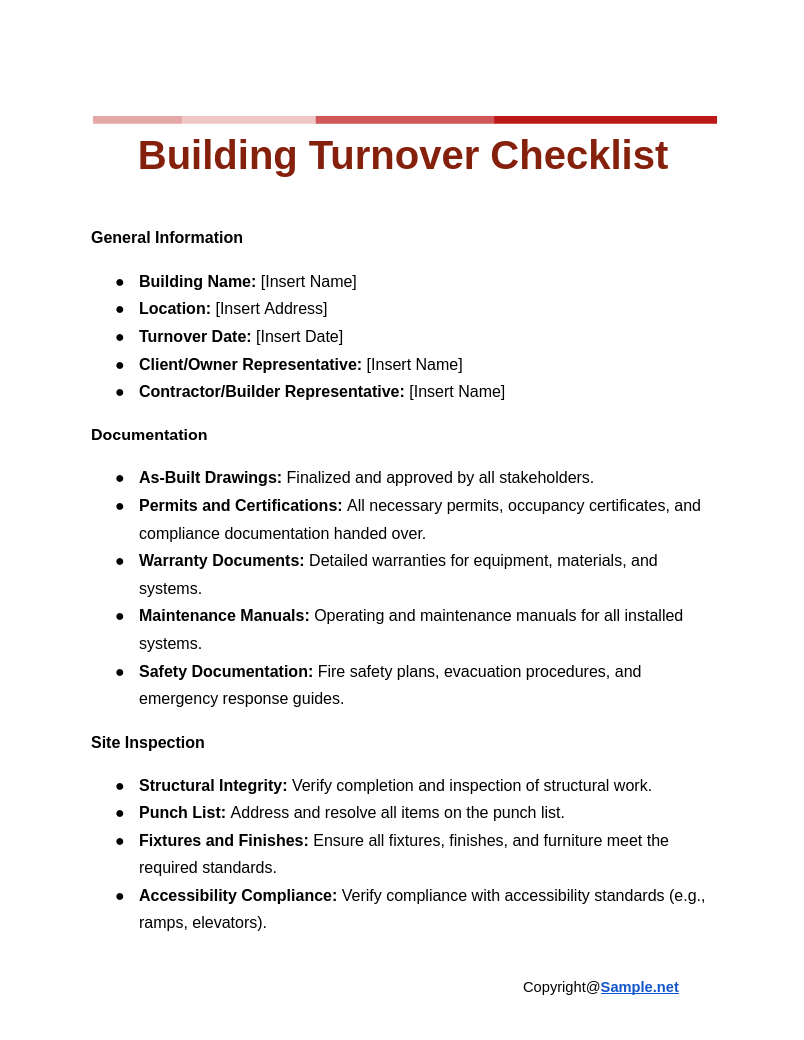
Building Turnover Checklist
download now -
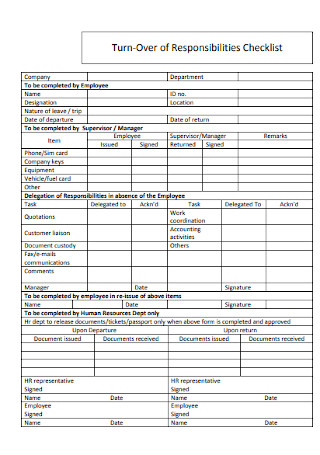
Turn-Over of Responsibilities Checklist
download now -
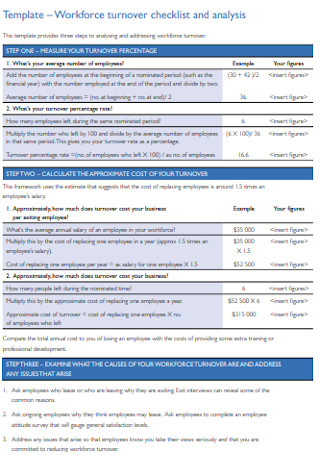
Workforce Turnover Checklist
download now -
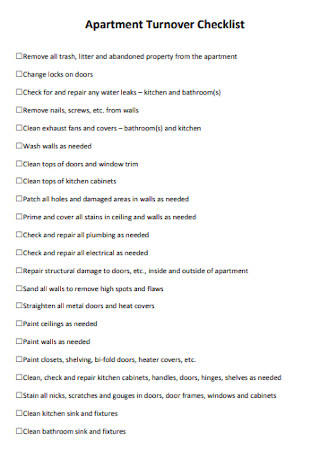
Apartment Turnover Checklist
download now -
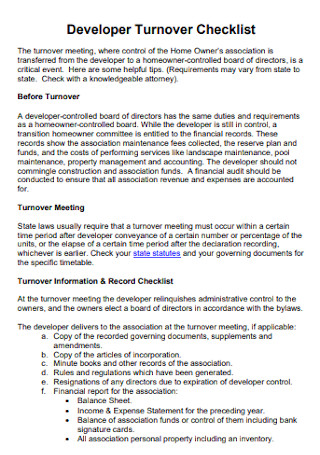
Developer Turnover Checklist
download now -
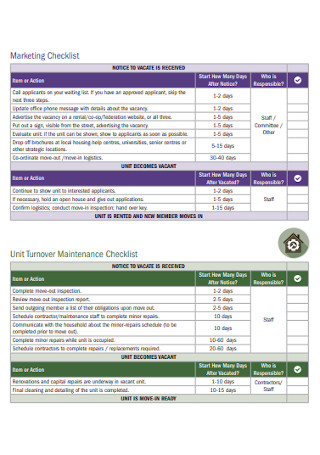
Marketing Turnover Checklist
download now -

Project Turnover Checklist
download now -

GST Turnover Checklist
download now -
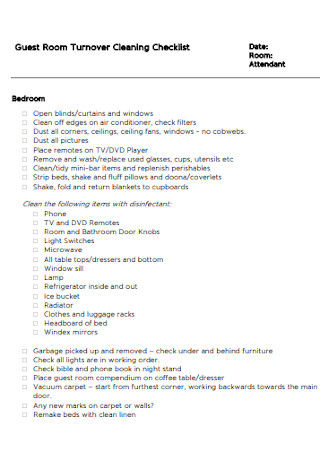
Guest Room Turnover Cleaning Checklist
download now -
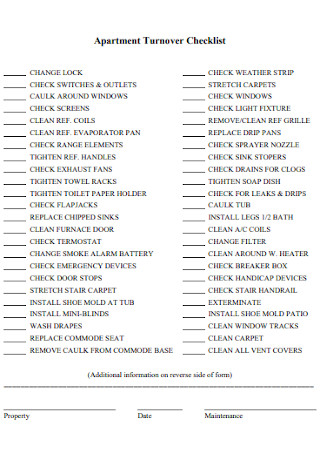
Apartment Turnover Checklist Template
download now -
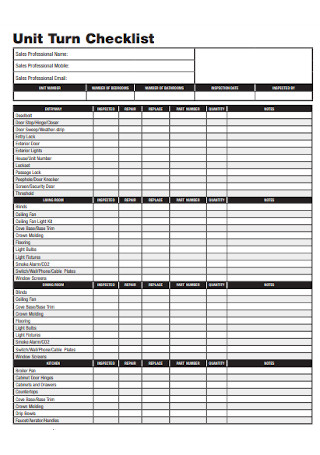
Company Turnover Checklist
download now -
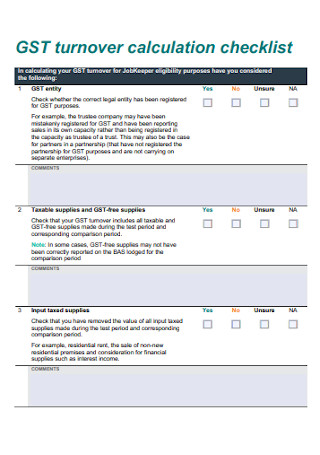
GST Turnover Calculation Checklist
download now -

Sample Apartment Turnover Checklist
download now -
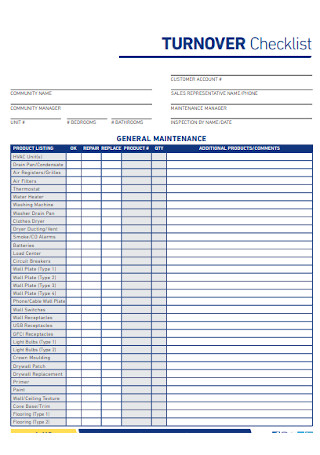
Simple Turnover Checklist
download now -

Rents Turnover Checklist Template
download now -
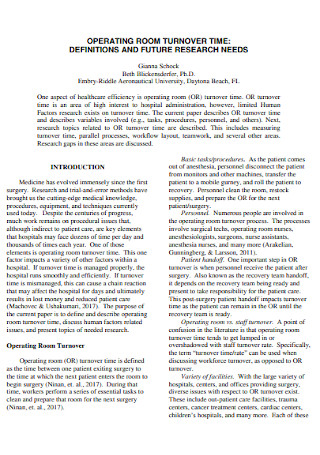
Room Turnover Checklist
download now -
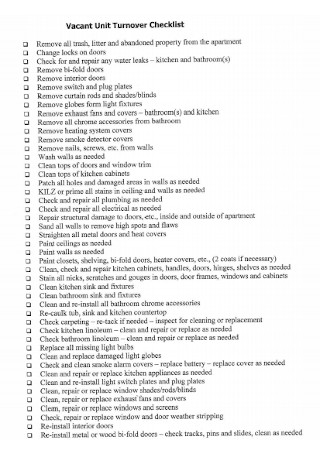
Vacant Unit Turnover Checklist
download now -
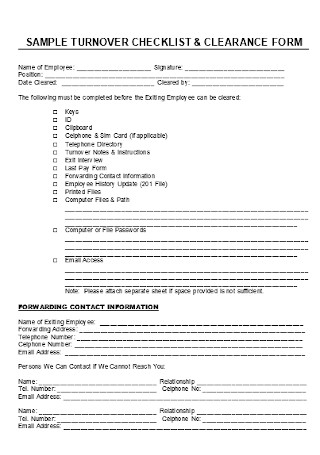
Sample Turnover Checklist and Form
download now -
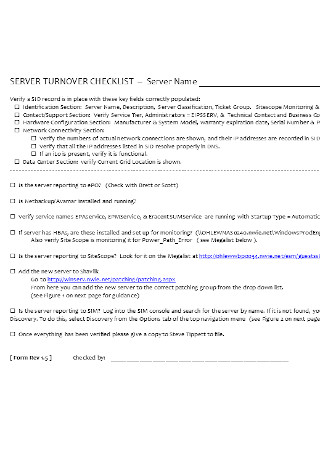
Server Turnover Checklist
download now
FREE Turnover Checklist s to Download
Turnover Checklist Format
Turnover Checklist Samples
What Is a Turnover Checklist?
Types of Turnover Checklists
Purposes of a Turnover Checklist
How to Create a Turnover Checklist
FAQs
What is the turnover rate for employees?
How do you conduct a turnover analysis?
Why do we need to reduce turnover?
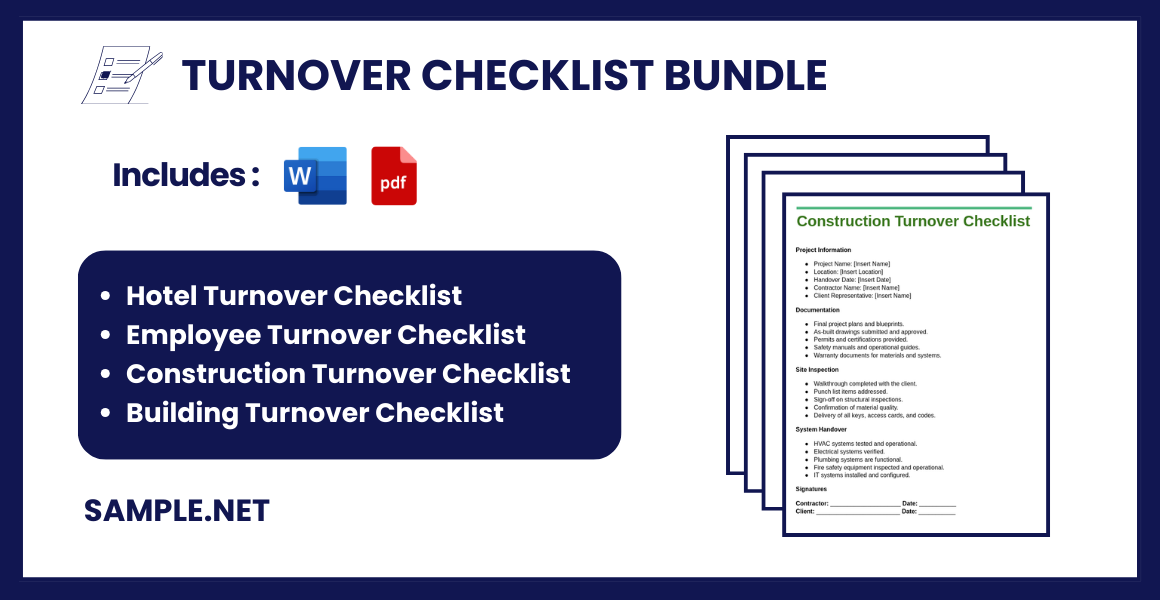
Download Turnover Checklist Bundle
Turnover Checklist Format
Turnover Checklist
Employee Name: [Insert Name]
Position: [Insert Position]
Department: [Insert Department]
Turnover Date: [Insert Date]
Supervisor Name: [Insert Name]
General Information
- Provide contact details for the new point of contact.
- Confirm availability for consultation after the turnover (if applicable).
- Submit all pending reports and updates.
Tasks and Responsibilities
- Outstanding Projects
- List of active projects with their current status.
- Provide access to relevant documents and project plans.
- Daily Duties
- Document detailed descriptions of daily responsibilities.
- Train or guide the replacement on key tasks.
Assets and Equipment
- Return company ID, keys, and badges.
- Hand over any issued laptops, phones, or other devices.
- Ensure the inventory list is updated and verified by the department head.
Access and Accounts
- Provide login credentials for work systems (if authorized).
- Deactivate or transfer software accounts as per policy.
- Submit access card for deactivation.
Documentation and Files
- Transfer hard and soft copies of critical documents to the new point of contact.
- Archive outdated files as per company policy.
- Update shared files and folders for accessibility.
Financial Matters
- Clear any outstanding travel or business reimbursements.
- Submit any remaining petty cash or receipts.
- Complete final salary and benefits settlement.
Final Review
- Conduct a final meeting with the supervisor or HR to review the checklist.
- Verify completion of all turnover items.
- Obtain signatures from both parties to confirm turnover completion.
Signatures
Employee: ________________________ Date: _______________
Supervisor: ______________________ Date: _______________
HR Representative: ______________ Date: _______________
What Is a Turnover Checklist?
A turnover checklist is a structured guide detailing tasks, responsibilities, and critical information for smooth role transitions in an organization. You can also see more on Handover Checklist.
Types of Turnover Checklists
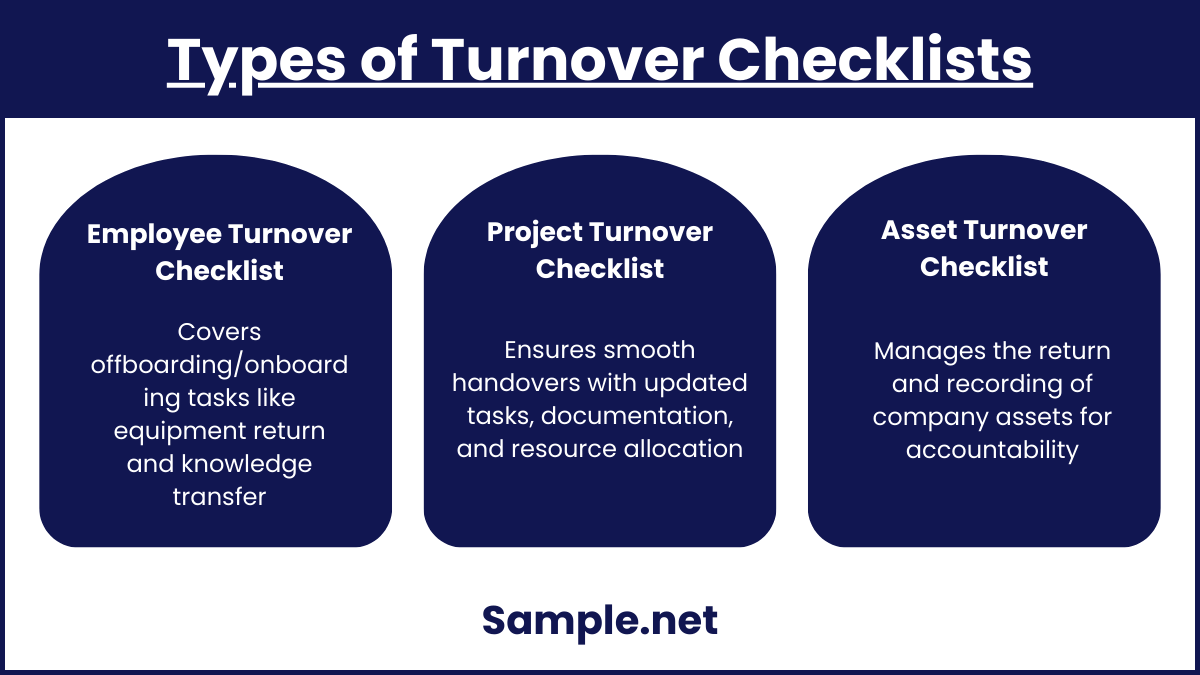
1. Employee Turnover Checklist: Used for offboarding or onboarding employees, covering tasks like equipment return and knowledge transfer.
2. Project Turnover Checklist: Ensures smooth project handovers, covering documentation, task updates, and resource allocation. You can also see more on Requirement Checklist.
3. Asset Turnover Checklist: Focuses on returning and recording company-owned assets, ensuring accountability.
Purposes of a Turnover Checklist
A turnover checklist serves as an essential tool for managing transitions effectively in various settings, from employee exits to project handovers. You can also see more on Health and Safety Checklist. Here are the key purposes of a turnover checklist:
1. Ensuring Accountability
A turnover checklist provides a clear record of tasks to be completed, assigning responsibilities to specific individuals or departments. This minimizes errors and ensures accountability throughout the transition.
2. Facilitating Knowledge Transfer
It ensures that vital information, processes, and resources are passed on to the successor, preventing disruptions in operations and maintaining workflow continuity.
3. Maintaining Compliance
The checklist ensures that all organizational and legal requirements are met, such as revoking access to sensitive systems and updating employee records. You can also see more on Company Checklist.
4. Protecting Organizational Assets]
It tracks the return of company property like laptops, keys, and badges, safeguarding physical and digital assets during employee or project transitions.
5. Streamlining Processes
A turnover checklist standardizes the transition process, making it efficient and repeatable. It helps avoid confusion and ensures all critical tasks are addressed systematically. You can also see more on Performance Checklist.
6. Minimizing Risks
By ensuring thorough and consistent execution, a turnover checklist mitigates risks related to incomplete handovers, security breaches, or operational delays.
7. Promoting Professionalism
Implementing a well-structured checklist reflects an organization’s commitment to professional standards, creating a positive impression among employees and stakeholders.
How to Create a Turnover Checklist
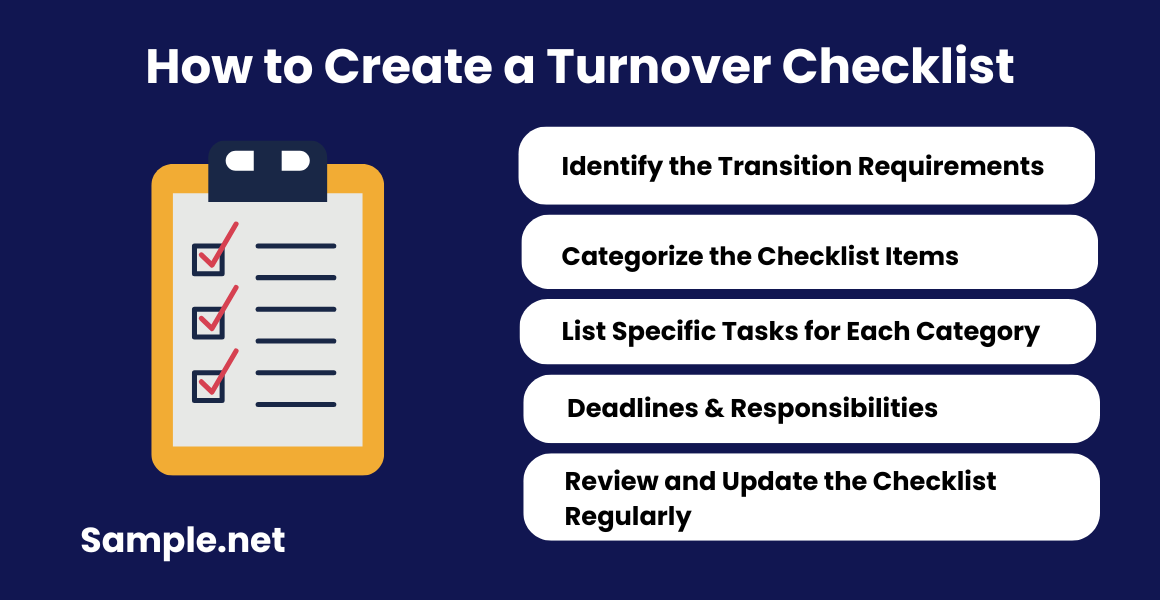
Step 1: Identify the Transition Requirements
Begin by defining the purpose of the turnover, such as an employee exit, onboarding, or project handover. Understand the specific tasks, resources, and information involved. Engage stakeholders to list all necessary steps.
Step 2: Categorize the Checklist Items
Divide the tasks into logical categories, such as administrative requirements, asset management, and knowledge transfer. This segmentation ensures the checklist is organized and user-friendly for all involved. You can also see more on Validation Checklist.
Step 3: List Specific Tasks for Each Category
For each category, write detailed tasks. For example, under “Knowledge Transfer,” include steps like providing access to shared files and conducting knowledge-sharing sessions. Ensure all steps are actionable and measurable.
Step 4: Incorporate Deadlines and Responsibilities
Assign deadlines to each task and designate responsible individuals or departments. Clear timelines and accountability help in timely execution and avoid last-minute confusion during transitions. You can also see more on Employee Checklists.
Step 5: Review and Update the Checklist Regularly
Before implementing, review the checklist for completeness. Gather feedback from team members and stakeholders. Update it regularly to adapt to evolving organizational needs and policies.
A turnover checklist helps ensure that all necessary tasks and responsibilities are clearly documented during transitions. It reduces disruptions and maintains operational consistency. By addressing all critical details, it promotes smooth handovers and supports the efficiency and stability of teams and organizations during times of change. You can also see more on Housekeeping Checklist.
FAQs
What is the turnover rate for employees?
The employee turnover rate is the ratio of employees who depart an organization during a specified time. People typically include resignations, dismissals, non-certifications, and retirements in their attrition calculations.
How do you conduct a turnover analysis?
To calculate the attrition rate, divide the monthly separations by the average number of employees, then multiply the result by 100. However, while obtaining your attrition rate may appear simple, the work necessary to reduce it requires analyzing data collection sheets from multiple systems.
Why do we need to reduce turnover?
Measuring and monitoring your staff attrition is essential, as an exceptionally high rate indicates that your business needs to undergo significant changes. A high staff turnover is not only costly and detrimental to morale, but it can also hinder the development and success of a company. You can also see more on Accounting Checklist.
